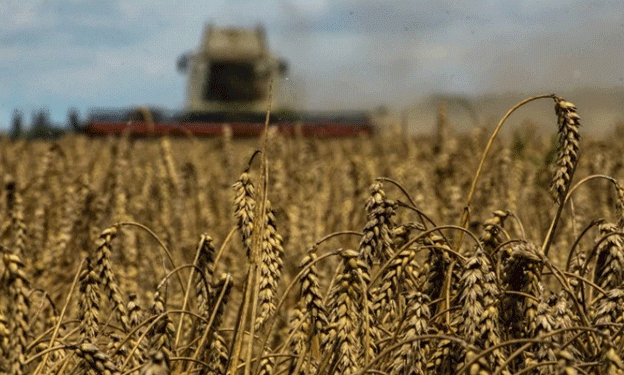The recent surge in wheat prices on October 29 has underscored the precarious situation facing wheat growers globally, as adverse weather conditions continue to threaten production in major wheat-exporting countries. The USDA’s Crop Progress report, released on October 27, highlights slow progress in U.S. wheat planting due to delays caused by challenging weather, while extended drought in Ukraine is impacting crop establishment and could significantly affect yields in the coming season.
In the U.S., wheat planting for the winter crop has progressed to 80% of the intended area as of late October, a 7% increase from the previous week but still short of the 83% market expectation. Comparatively, planting was at 82% during the same period last year and at 84% based on the five-year average. This lag is compounded by a drop in wheat quality; only 38% of the crop is currently rated as good to excellent. This rating represents a decline from 47% during the same period last year and falls below analyst forecasts, heightening concerns about wheat’s potential yield this season.
Across the Atlantic in Ukraine, the outlook is also grim. Ukrainian farmers have completed about 92% of their winter wheat planting, but due to prolonged drought from summer into early fall, much of the crop was sown on dry soil, leading to slower crop development and reduced yield potential. Ukraine, a significant wheat exporter, faces a major setback in next year’s wheat output if drought conditions persist, impacting the country’s ability to supply global markets.
The uncertain future of wheat supply has influenced other crop markets as well. Corn, for example, saw a moderate price increase in December contracts, rising by 0.73%, mainly as a result of wheat’s strong rally. However, the USDA Crop Progress report showed a contrastingly positive trend for corn, with 81% of U.S. corn harvest completed by late October, exceeding the 80% market expectation. This figure also marks a notable rise from last year’s 68% completion rate and is well above the five-year average of 64%, making it the fastest U.S. corn harvest in a decade. This progress supports expectations for the second-highest corn production in U.S. history, indicating a strong year for corn despite wheat’s challenges.
On the domestic market, South American corn prices slightly declined. As of October 29, December 2024 South American corn contracts were offered at Vung Tau port in Vietnam at a range of 6,600-6,650 VND/kg, while contracts for January 2025 showed slightly higher offers at 6,650-6,700 VND/kg. Prices at Cai Lan port ranged slightly higher, at a 50-100 VND/kg premium compared to Vung Tau, reflecting market demand and logistical considerations.
The current challenges in wheat production highlight the sensitivity of global food supply to climate variability. With the U.S. facing slower planting and reduced crop quality and Ukraine battling drought, future wheat supply appears uncertain, with potential repercussions for food prices worldwide. Corn, however, demonstrates resilience, with a rapid U.S. harvest providing a cushion against wheat’s volatility. Farmers and agronomists will continue to closely monitor weather patterns and global market responses as these developments unfold.
Error




